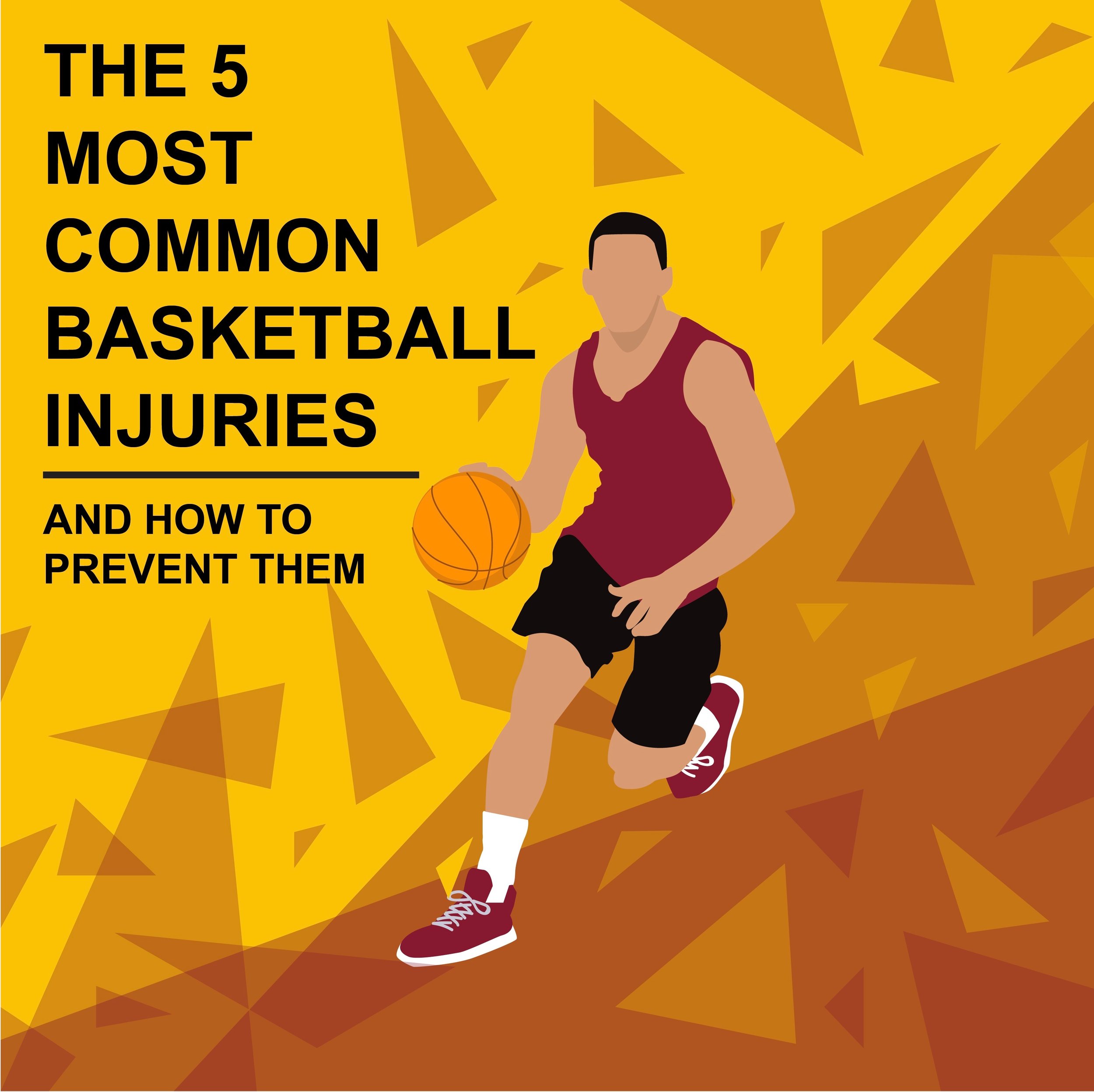The 5 Most Common Basketball Injuries, and How to Prevent Them
We took a look at some of the most common injuries faced by basketball players according to a report from the National Athletic Trainers' Association to find out what the numbers might tell us. As with most sports, sprains, strains, and general trauma account for almost all of the injuries commonly suffered, but that doesn't give you much detail. Let's take a closer look at what types of injuries basketball players commonly experience and how you might be able to avoid them.
1. Foot/Ankle Injuries
Injuries to the lower extremities were far and away the most prevalent according to the report, with foot and ankle problems being the worst offender. Whether it's rolling an ankle, getting awkwardly hit in a scramble for the ball, or accidentally getting stepped on, basketball naturally leaves athletes more open to these types of injuries.
Prevention: Preventing foot and ankle injuries is all about support. Before you hit the court, make sure you have the right footwear for the occasion. Indoor basketball shoes help prevent slipping on indoor playing surfaces, and in general, a good pair of basketball shoes will provide a higher profile and more support around the ankle. It also doesn't hurt to tape up your ankle with athletic tape before a game if you want to take extra preventative measures or are prone to ankle injuries.
2. Hip/Thigh Injuries
Pivoting, running, jumping, and rebounding all place extra strain on the legs and hips, leaving players open to a variety of injuries. Hip strains and bruises can occur from contact on the court or over-extending of muscles and ligaments.
Prevention: Some injuries suffered through contact just can't be prevented, but when in doubt, stretching is always a good plan of action. The more flexible your muscles and tendons are, the less likely you'll be to over-extend them and injure yourself in the process. Stretching out your hips is a key way to warm up before you play.
3. Knee Injuries
Severe injuries like ACL tears are not as common in basketball as they are in high-contact sports, but knee injuries -- mostly minor sprains and strains -- still have the third highest incidence of occurring in basketball.
Prevention: Strengthening the muscles in your legs will help build better support for your knees, so this is one where hitting the gym can really help. And as we mentioned above, always remember to thoroughly stretch before activity. If you know you have bad knees and are susceptible to injury, getting a good knee brace is also a smart idea.
4. Wrist/Hand Injuries
It's actually surprising that these aren't more common given that the game is played primarily with the hands, but only around 11% of basketball injuries occur to the wrist/hand/forearm according to the study.
Prevention: Keeping your hands and wrists in healthy condition is more about awareness than anything else. Be sure to look the ball right into your hands when someone passes it to you; looking away before you've caught the ball is a great way to jam a finger. And always keep an eye out for other players on the court. The less you run into other players, the better.
5. Head/Face Injuries
Bumping heads with another player or taking an accidental elbow to the face is never a fun situation. Getting hit in the face with the ball is probably even worse, given the imminent embarrassment.
Prevention: The important thing to watch out for here is concussion symptoms. There aren't many steps you can take to avoid contact to the head, but if you do, be sure to carefully monitor your symptoms If there is any sign of concussion at all, seek immediate help from a professional.
If there is one more takeaway we can give you from the NATA report, it's that roughly 60% of injuries occur in the second half of games, suggesting that fatigue plays a big part. So aside from the preventative measures mentioned above, always work to stay in the best shape you can. Running those extra miles at the gym might not be fun at the time, but they'll help you cruise past opponents in the second half, and more importantly, they just might keep you safe from injury.

